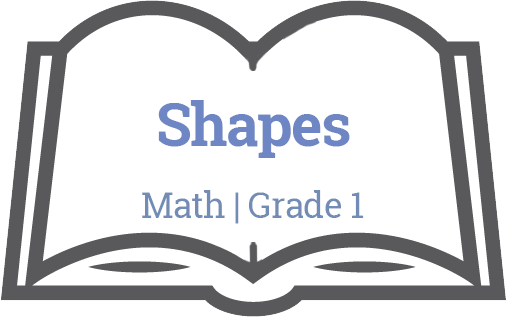
Unit Plan: Shapes
Math / Grade 1

Big Ideas
Math | Grade 1
- Objects and shapes have attributes that can be described, measured and compared (Math Gr 1-2)
Concepts:
- Designs develop out of natural curiosity (ADST 1-3)
- Skills can be developed through play (ADST 1-3)
Essential Questions
Students will keep considering…
- How do shapes contribute to a design?
- How to shapes combine to make a whole?
- What characteristics define shapes?
- What 2D shapes can I see on 3D objects?
- How do I give directions?
- How can I use shape to design something bigger?
- How can shapes represent something larger?
- How can I use shape to design something bigger?
- How can shapes represent something larger?
- How can I give direction?
Evaluative Criteria
N/A
Monitoring Progress
Teacher will monitor progress:
Teachers can monitor progress through ongoing formative assessment including but not limited to:
- Class discussion
- Group and pair discussions
Resources
AUDIO
TEXTS
Reflection
How will teachers and their students reflect on and evaluate the completed project?
Teacher Reflection
- What aspects of the unit went well?
- What did students struggle with?
- What did you struggle with?
- What would you add/revise the next time you taught this unit?
- Were there any unintended outcomes?
- Were students engaged?
Downloads
Stage 1 – Desired Results
Big Ideas
- Objects and shapes have attributes that can be described, measured and compared (Math Gr 1-2)
- Designs develop out of natural curiosity (ADST 1-3)
- Skills can be developed through play (ADST 1-3)
Concepts
- Shape
- Directionality
Transfer Goals
Students will be able to independently use their learning to…
- Giving to instructions
- Listening to instructions
- Directionality
Meaning
Students will understand that…
- There are multiple shapes
- Shapes combine together to make 3D objects
Students will keep considering…
- How do shapes contribute to a design?
- How to shapes combine to make a whole?
- What characteristics define shapes?
- What 2D shapes can I see on 3D objects?
- How do I give directions?
- How can I use shape to design something bigger?
- How can shapes represent something larger?
- How can I use shape to design something bigger?
- How can shapes represent something larger?
- How can I give direction?
Acquisition
Students will be skilled at…
Math 1
- Sorting 3D object and 2D shapes using one attribute and explaining sorting rule
- Compare 2D shapes and 3D objects in the environment
- Describe relative positions using positional language
- Replicating composite 2D shapes and 3D objects
Math 2
- Sorting 3D objects and 2D shapes using two attribute and explaining sorting rule
- Describe compare and construct 2D shapes, including triangles, squares, rectangles, circles
- Identify 2D shapes as part of 3D objects
- Using traditional NW coast peoples shapes, reflected in the natural environment
ADST
- Identify needs and opportunities for designing, through exploration
- Generate ideas from their experiences and interests
- Choose tools and materials
- Make a product using known procedures or through modelling of others
- Decide on how and with whom to share their product
- Demonstrate their product, tell the story of designing and making their product, and explain how their product contributes to the individual, family, community, and/or environment
Which Core Competencies will be integrated into the unit?
- Creative Thinking
- Communication
First People's Principles of Learning
The unit will make connections with:
Art:
- Traditional and contemporary Aboriginal arts and arts-making processes
- A variety of local works of art and artistic traditions from diverse cultures, communities, times, and places

The following resources are made available through the British Columbia Ministry of Education. For more information, please visit BC’s New Curriculum.
Big Ideas
The Big Ideas consist of generalizations and principles and the key concepts important in an area of learning. The Big Ideas represent what students will understand at the completion of the curriculum for their grade. They are intended to endure beyond a single grade and contribute to future understanding.
Core Competencies
 Communications Competency
Communications Competency
The set of abilities that students use to impart and exchange information, experiences and ideas, to explore the world around them, and to understand and effectively engage in the use of digital media
 Thinking Competency
Thinking Competency
The knowledge, skills and processes we associate with intellectual development
 Social Competency
Social Competency
The set of abilities that relate to students’ identity in the world, both as individuals and as members of their community and society
Curricular Competencies & Content
Curricular Competencies are the skills, strategies, and processes that students develop over time. They reflect the “Do” in the Know-Do-Understand model of curriculum. The Curricular Competencies are built on the thinking, communicating, and personal and social competencies relevant to disciplines that make up an area of learning.
Additional Resources
First People's Principles of Learning
To read more about First People’s Principles of Learning, please click here.
For classroom resources, please visit the First Nations Education Steering Committee.
